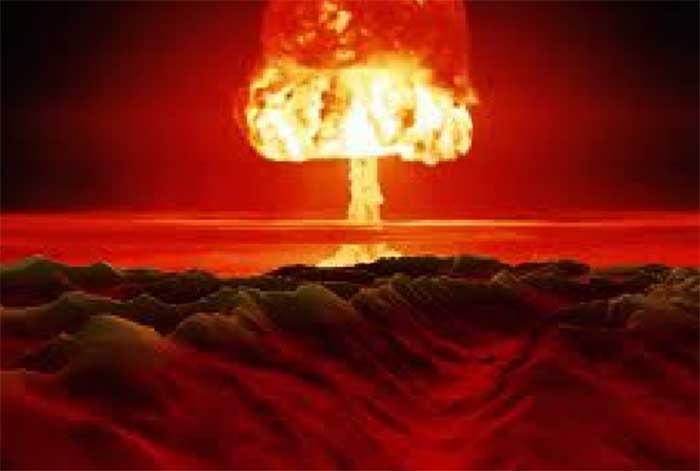
The specter of nuclear war haunts tensions between India and Pakistan, and the disputed territory of Kashmir could provide the spark that lights South Asia’s nuclear fuse, warns Strafor, a geopolitical intelligence think tank that provides strategic analysis and forecasting to individuals and organizations around the world.
With passions again running high in Kashmir, the stakes for the region and the world could not be higher, it said adding: “Decades ago, the people of Kashmir were promised a plebiscite that never took place. Will they ever be asked what they want?”
The Strafor report is written by Charles Glass from its Board of Contributors. The report recalled that in 1998, the CIA subjected India to strict surveillance to ensure it was complying with its commitment not to test nuclear weapons. Washington went into shock on May 11, 1998, when Indian Prime Minister Atal Bihari Vajpayee announced that his country had just detonated not one, but five nuclear warheads at Pokhran.
Pakistan responded by testing five of its nuclear bombs on May 28. Pandora’s box was wide open, threatening mass destruction to the Asian subcontinent if the Pakistani and Indian armies squared off along the Line of Control that separated their forces in the disputed region of Jammu and Kashmir.
If the CIA is watching India and Pakistan now, it will have to do better than it did in 1998, the Strafor report said adding: “In 2019, with passions high over India’s abrogation of Kashmir’s legal, if fictitious, autonomy, the outcome would not be waking up to discover one side or the other had tested weapons. It would be the sight of nuclear war taking millions of lives. Although the stakes in Kashmir could not be higher, the United States and much of the international community call the dispute India’s “internal affair” or a “bilateral” issue between India and Pakistan. It isn’t. A potential nuclear conflagration cannot be anything other than a matter of international peace and security.”
The Indian and Pakistani armed forces possess both strategic and tactical nuclear weapons, which local commanders could use on the battlefield in populated areas. This would be the first use in war of atomic weapons since the U.S. destruction of Hiroshima and Nagasaki in 1945, according to Strafor which is sometimes referred to as ‘The Shadow CIA.’
The possibility of the conflict going nuclear may have increased on Aug. 16 when Indian Defense Minister Rajnath Singh seemed to abandon India’s “no first use” doctrine when he tweeted that “India has strictly adhered to this doctrine. What happens in the future depends on the circumstances,” the Strafor report pointed out.
If the decades long armed rebellion in Kashmir grows more intense in response to India’s revocation of the region’s autonomy and its imposition of a total security lockdown, India will blame Pakistan, which in years past supported Kashmiri insurgents, Strafor said adding:
India and Pakistan came to blows last February, following an insurgent attack on Indian troops in Kashmir. The Pakistanis downed an Indian fighter jet and captured its pilot, Abhinandan Varthaman. When (Prime Minister Imran) Khan returned the Indian pilot on March 1, Modi did not acknowledge his conciliatory gesture. Nor has his government been willing to discuss Kashmir, whose people were promised a plebiscite on their future by India’s first prime minister, Jawaharlal Nehru, in 1947. The vote never took place, but several wars have.
“The question is, what do the people of Kashmir — those in the Indian-held two-thirds of the region, the Pakistani-held western third and the Hindu Kashmiris who were expelled from their homes in 1947 and are still officially displaced — want? No one is asking them, but that may be the only way to save them, and the world, from nuclear war,” Strafor report concluded.
Abdus Sattar Ghazali is the Chief Editor of the Journal of America (www.journalofamerica.net)

No comments:
Post a Comment